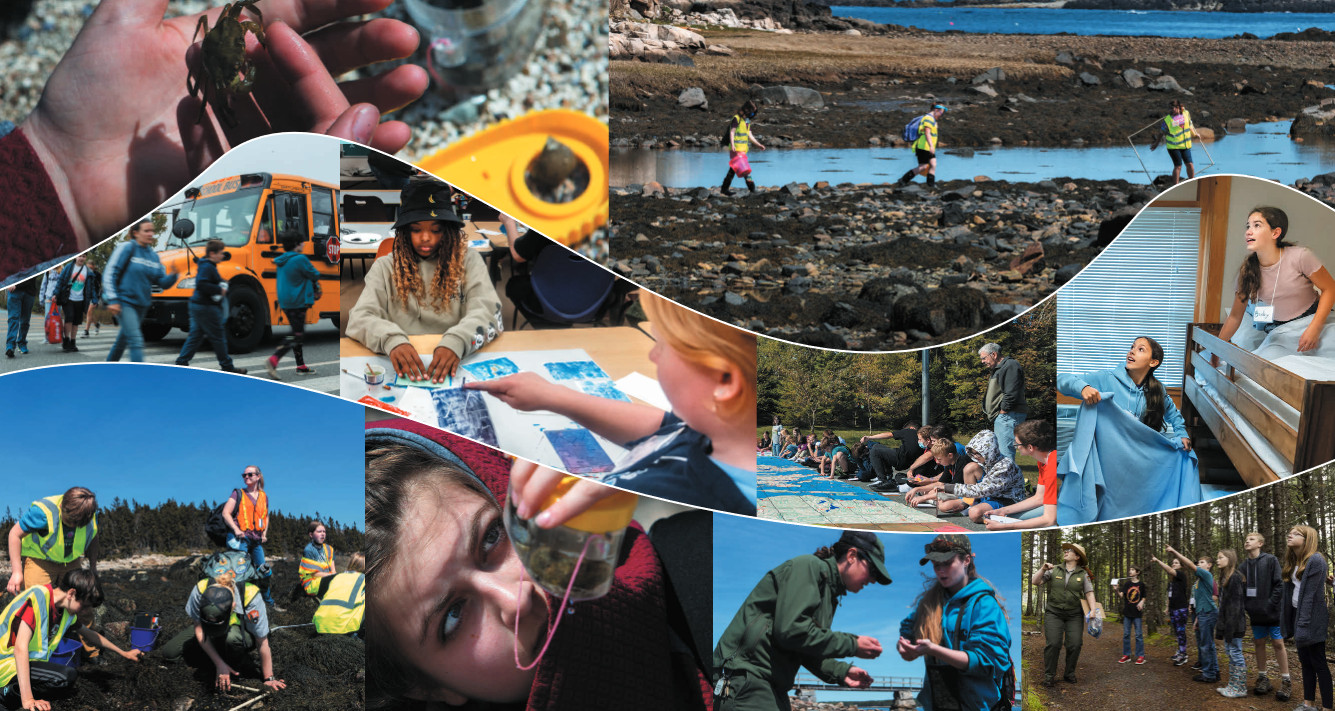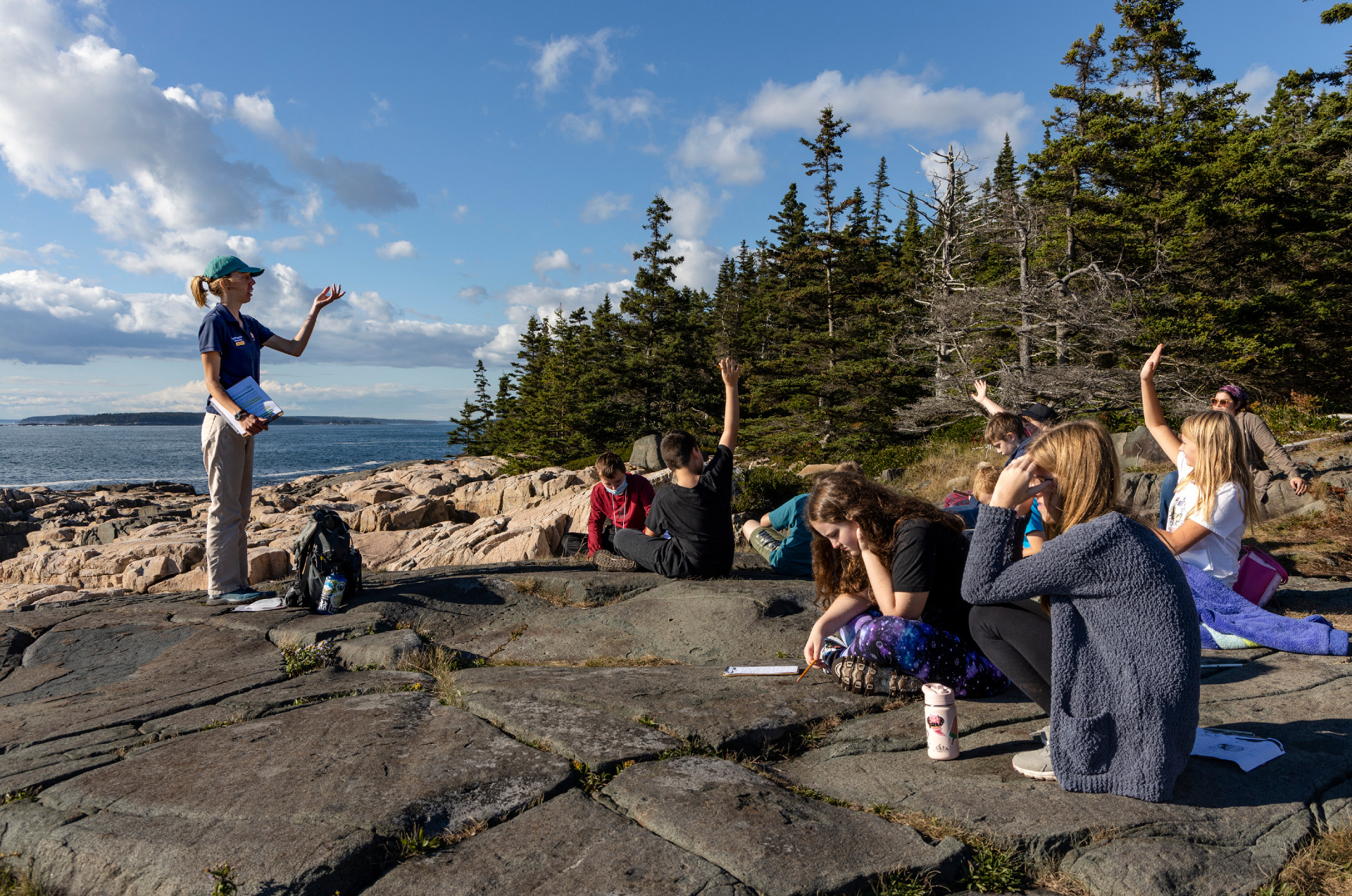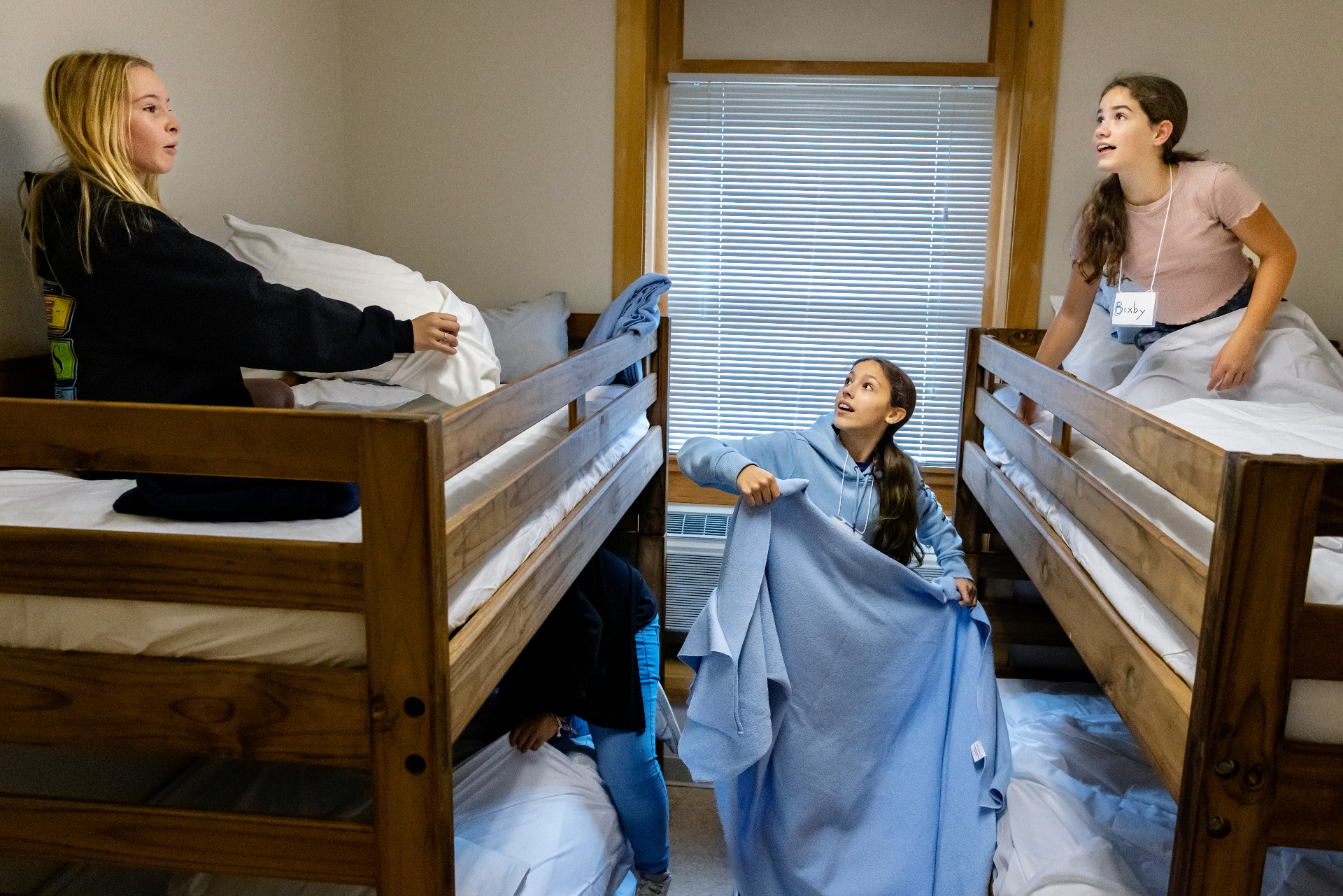Schoodic Education Adventure Has Connected Middle-School Students to Acadia’s Forests and Coastline for Three Decades
March 13th, 2023
March 13th, 2023
BY SHANNON BRYAN
During the Schoodic Education Adventure (SEA) program, middle-school students spend their days investigating marine life in tidepools and examining layers of soil. They plot data-collection sites, scout for crabs, and get acquainted with Acadia’s geologic history. At night, they hike under the stars, share stories around a campfire, and fall asleep in a bed away from home—perhaps for their first time.
By the end of the immersive, three-day field trip on Acadia National Park’s Schoodic Peninsula, the middle schoolers depart with inter-tidal mud on their clothes, sensory-packed memories, and, hopefully, a deeper understanding of the natural environment and their role in it.
“They’re learning how to see and observe” said Director of Schoodic Education Adventure Alexa Pezzano. “When they see it and get hands on, it makes for more meaningful connections.”

Students from around Maine participate in residential outdoor science programming with the Schoodic Education Adventure (SEA) program at the
Schoodic Institute. (Photos by Ashley L. Conti and Lily LaRegina/Friends of Acadia)
Last summer marked SEA’s 30th anniversary—a tenure that speaks to the program’s adaptability and impact. In the last two decades since the program launched at the Schoodic Education and Research Center, a former Navy base on the Schoodic Peninsula and now home to the Schoodic Institute, more than 5,000 students have completed upwards of 111,000 hours of the hands-on, feet-in environmental education curriculum.
Through that work, which Friends of Acadia has helped fund with support from L.L.Bean since 2006, students develop a sense of stewardship for the environment and they learn about conservation science and the protection of natural and cultural resources.
“It has the same appeal now as it did 30 years ago,” said Acadia National Park Education Coordinator Kate Petrie.
“Learning to be comfortable in nature, it stays with them. They develop a sense of pride and confidence being outdoors.”
The program is taught by national park rangers as well as SEA staff, so students get to interact with folks in the gray and green, which is rare for overnight programs in national parks.
SEA’s roots go back to 1992 and the shores of Echo Lake in Southwest Harbor. Known as the Natural Resources Camp, the first multi-day environmental education program was developed in partnership with the Appalachian Mountain Club. Open to sixth graders, the program ran each fall for four to five weeks. Curriculum included map and compass, water cycle exploration, Leave No Trace, and a night hike to learn about nocturnal
adaptations.

Abigail Charlebois, a Schoodic Education Adventure Research Assistant, talks to sixth graders from Hancock Grammar School about Acadia’s geology during the Schoodic Education Adventure (SEA) program. (Photo by Lily LaRegina/Friends of Acadia)
The program ran at Echo Lake for 10 years—being renamed Acadia Camp in 1999—before moving to the Schoodic Peninsula in 2002. At the time, the National Park Service was still working out plans for adapting or reusing the former Navy base’s facilities, but some enterprising park staff converted two Navy buildings into classrooms and dorm space in preparation for students.
The first Schoodic Education Adventure program was piloted with two schools from Mount Desert Island. The new location had some incredible assets, including easy access to the intertidal zone, hiking trails, and intriguing geological features—and the program’s curriculum expanded to take advantage.
Since then, Schoodic Education Adventure continues to adapt to the changing needs of students and teachers—and the changing environment.
“The program is so unique and robust,” said Friends of Acadia’s Conservation Projects Manager Paige Steele. “I think it’s so successful because staff are always building relationships with teachers and adapting to current needs and curriculum requests.”
SEA offers 22 programs for teachers to choose from, enabling those teachers to mesh what students are studying in Acadia with what they’re studying back at home. In recent years, said Pezzano, more teachers are requesting climate change curriculum. Programs are based in science literacy and citizen science but incorporate a wide array of subject areas.

Hancock Grammar School sixth, seventh, and eighth graders make their beds in the dorms as part of the Schoodic Education Adventure program at Schoodic Peninsula in Acadia National Park. (Photo by Ashley L. Cont/Friends of Acadia)
The students also learn how to use modern technology inrelevant ways. “We integrate technology that connects students to resources, like iPads for photojournalism,” said Pezzano. They also use the same tools and techniques used by researchers to capture and record weather data, identify trees, and more.
And the data those students gather really matters.
“The citizen science is actually contributing to research data being utilized,” said Pezzano, such as the bio-inventory of Acadia through an iNaturalist project.
Also notable: in September 2019, a middle-school class was exploring at the edge of Acadia’s Little Moose Island during a Marine Investigations program with SEA. One of the students discovered the molted shell of an Asian shore crab. The crab is an invasive species, and the find was among the first confirmed reports of the species in Acadia National Park.
While finding a before-unseen species in the park isn’t likely for most students, every student can discover a devotion to the environment.
“Whether they come to SEA once or multiple times, or come on field trips or virtual programs, they build upon these experiences and become local stewards of our shared lands and waters,” said Steele. “They feel comfortable in the outdoors and they know how to interact with the park, to leave it as the found it, or even better than they found it.”
Editor’s Note: Some of the details for this story were gleaned from a presentation by Acadia National Park Education Coordinator Kate Petrie: “History of the Schoodic Education Adventure.”
SHANNON BRYAN is Friends of Acadia’s Content and Website Manager.
Schoodic Education Adventure is Acadia National Park’s residential education program for middle school students. Students spend three to four days on the Schoodic Peninsula, living and learning in Acadia.
Learn More